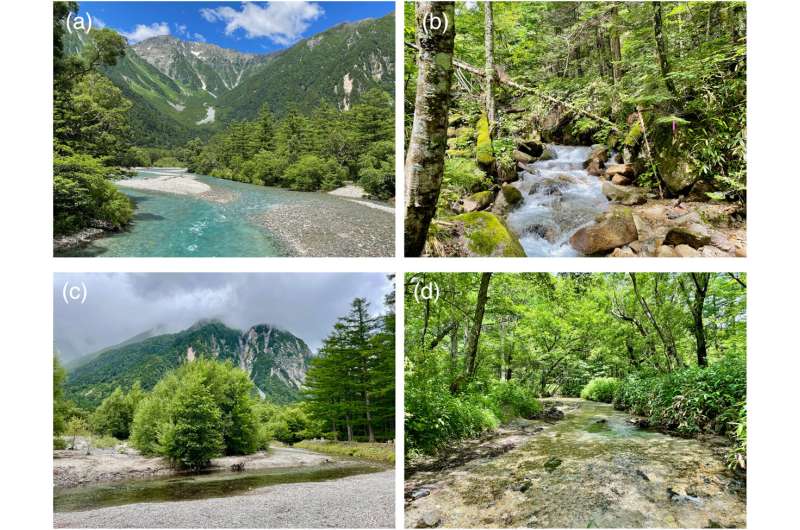This article has been reviewed according to Science X's editorial process and policies. Editors have highlighted the following attributes while ensuring the content's credibility:
fact-checked
trusted source
proofread
Investigating effects of invasive trout on native charr in Kamikochi, Nagano

Globally, salmonids have been widely introduced into freshwater areas for aquaculture and recreational angling. brown trout (Salmo trutta), which are native to Europe, and brook trout (Salvelinus fontinalis), which are native to North America, were introduced to Japan, and currently there are concerns that they are having a negative impact on the distribution and habitat of native white-spotted charr (Salvelinus leucomaenis) in Japan.
In particular, many tributaries that flow into the Azusa River in Kamikochi, Nagano Prefecture are dominated by these invasive trout stocked in the Taisho and early Showa eras. Subsequently, native white-spotted charr populations in these areas have declined over the past 50 years.
In this study, researchers conducted underwater observations and diet analyses in headwater tributaries of the Azusa River, where invasive trout (brown trout and brook trout) coexist with native white-spotted charr. The findings have been published in Ecological Research .
The objective was to elucidate the competitive dynamics among the three species. During the underwater observations conducted from June to September 2021, the foraging attempts per minute among all species were similar. However, brook trout and white-spotted charr engaged in benthic and water column foraging, while brown trout primarily foraged in the water column.
Furthermore, dietary preferences varied; white-spotted charr and brook trout primarily consumed aquatic invertebrates, whereas brown trout predominantly fed on terrestrial organisms, including terrestrial insects, amphibians and fish.
These results indicate a substantial overlap in prey resource use between brook trout and native white-spotted charr. Additionally, beyond directly preying on native white-spotted charr, brown trout may influence the entire mountain stream ecosystem through predation on terrestrial organisms.
More information: Miles I. Peterson et al, Species‐specific foraging behavior and diets of stream salmonids: An implication for negative impacts on native charr by nonnative trout in Japanese mountain streams, Ecological Research (2023). DOI: 10.1111/1440-1703.12419
Provided by University of Tsukuba



















